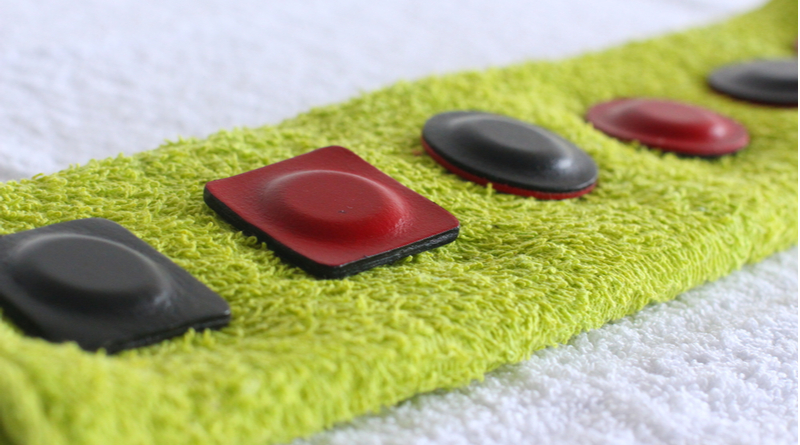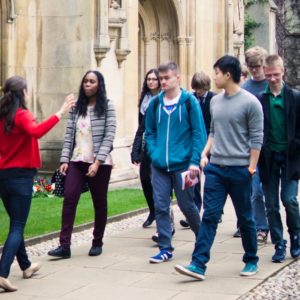What is Biomagnetic Therapy?
Magnetic therapy is an alternative medical practice that uses static magnets to alleviate pain and other health concerns.
Medical Biomagnetism also called BioMagnetic Pair Therapy is a natural complementary therapy that diagnoses and treats a large number of illnesses through the use of pairs of medium intensity magnets. These magnets are said to normalize or equalize a disease organism’s pH level.
Therapeutic magnets are typically integrated into bracelets, rings, or shoe inserts, and therapeutic magnetic mattresses and clothing are also on the market.
What 3rd level courses are available?
Universities and colleges in Ireland are offering Biomagnetic Therapy courses in the following subject areas:
- Biomagnetism Level 1 – Study the therapeutic system and practices of Biomagnetism and Biomagnetic Pair Therapy.
- Biomagnetism Level 2/Bioenergetics – Study the history of Bioenergetics, scanning sequence, and principles.
- Practitioner Certification in Applied Biomagnetic Therapy – Gain the knowledge and skills to set up your clinic in Applied Biomagnetic Therapy.
- Master Practitioner Certification in Applied Biomagnetic Therapy – This program is for those who have completed the Practitioner Certification in Applied Biomagnetic and wish to continue learning and advancing their skills.
- Nutrition for the Complementary Therapist (Biomagnetic Therapist) – Study the role of nutrition in multi-dimensional medicine.
Studying Biomagnetic Therapy in college
Many Biomagnetic Therapy courses take place over 1 year to 4 years depending on the course and modules selected. There are also part-time courses and night courses available so you can be sure to fit in your studies no matter what your schedule is like.
Courses will cover theory work through lectures, assignments, tutorials, and taught modules. Assessments will take place continuously with written examinations and practical assignments combined to achieve a qualification.
You could also consider work experience or a work shadow in the industry. It’s a good idea to attend open days and talk to current students or practitioners to help inform your decision about starting a career in Biomagnetic Therapy. You could also ask to sit in on a session during patient consultations to gain an insight into the role.
Relevant work experience is a good way of demonstrating a genuine interest in the field and is regarded favorably by employers.
Work Experience will not only allow you to obtain a deeper knowledge and understanding of the industry, but it will also give you a chance to do some essential networking with other industry professionals and gain valuable contacts for the future.
Career options
After completing a course in Biomagnetic Therapy you will be able to get started in a career that uses specific knowledge of Magnets and their properties.
Biomagnetic Therapy is typically performed on a one-to-one basis and can take place in your own home, from an alternative therapy clinic, or sometimes in private practice. Once established, you may decide to train in other alternative therapies to complement your practice. These may include kinesiology, acupuncture, herbalism, reflexology, and flower essences.
You may need to have an additional job in the early stages of setting up a practice until your client base becomes large enough to sustain a regular income. The time taken to build up a practice varies as you’ll need to assess the local market and raise awareness of your services.
Working hours will depend on whether you are employed by a company with set business hours or if you are contracted to various facilities or companies. The hours are usually full-time, Monday to Friday, although you may have to be flexible to suit your clients’ needs. For example, you may choose to work some evenings or weekends.
Related jobs include:
- Biomagnetic Therapist
- Biomagnetic Pair Therapist,
- Chiropractor
- Osteopath
- Physical Therapist
- Massage therapist
- Veterinarian
- Dentist
- Yoga instructor
- Reiki practitioner
- Acupuncturist
- Aromatherapist
- Homoeopath
- Doctor of Chinese Medicine
- Tai Chi or Qigong Instructor
- Biofeedback practitioner
- Holistic skincare specialist
- Kinesiology or movement therapy instructor
Further study
After completing a course in Biomagnetic Therapy you may choose to pursue further study in a specialist field to increase your knowledge base and skillset. Postgraduate study can also be used as a means to change career focus or to gain professional qualifications required to practice in certain career areas such as Physical Therapy or to move into a field such as Dentistry or Veterinary Science that may make use of Biomagnetic Therapy.
FAQ
Are there different types of Biomagnetic Therapy?
Biomagnetic therapy comes in several forms with varying applications. This includes:
· Static Magnetic Field Therapy –With this form of therapy, a magnet of some kind is placed in direct contact with your skin.
· Magnetic Therapy with Acupuncture – An acupuncturist can combine acupuncture needles with magnets to further support the opening of “energy pathways.”
· Electromagnetic Therapy –Electromagnetic therapy involves magnets that are charged with electricity, which also usually means the presence of an electric pulse which makes it a form of pulsed magnetic therapy.
What is Biomagnetic Therapy Used For?
Research on how doctors can use biomagnetic therapy is still ongoing but considering the broad mechanisms involved, magnetic therapy may have a wide range of potential applications.
- General Pain Relief –Magnetic therapy is most commonly cited for relieving pain in a variety of health conditions. This includes arthritis, muscle strains, and post-polio syndrome.
- Symptoms of Fibromyalgia –Fibromyalgia is a disorder that affects the muscles and soft tissues throughout the entire body. Researchers believe this disorder is caused by the way the brain and spinal cord process both painful and non-painful signals, resulting in extremely amplified muscle pain sensations. Fibromyalgia is most often characterized by widespread pain affecting the entire musculoskeletal system, manifesting as a constant dull ache.
- Insomnia – Insomnia affects about 25 million people in the country. Consistent periods of inadequate sleep can have severe effects on a person’s mental, emotional, and physical health and potentially pose a danger to others.
Where can I study Biomagnetic Therapy?
Explore your options here
Did You Know?
· Some magnets are found naturally on the earth. Lodestones are natural magnets made from a substance called magnetite.
· The two biggest magnets in the world reside at Los Alamos National Laboratory in New Mexico and Florida State University (FSU). The two sister laboratories have magnets that can reach 100 and 45 tesla, respectively. By comparison, junkyard magnets that lift cars, are about 2 tesla.
· Most of the magnets we use are made of iron (like fridge magnets). But magnets can be made of any material with unpaired electrons. That includes many metals and alloys, such as neodymium, which is used in disk drives. Ferrimagnetic materials are often not metals at all.
· Some animals and bacteria have magnetite in their bodies. A type of mollusk called a chiton even has magnetite in its “teeth,” which cover its tongue. The magnetite is abrasive and lets the animal scrape algae, but it might also provide a homing sense, enabling chitons to find their way back to certain places where they like to mate and feed. Studies of homing pigeons seem to show that they have a magnetic sense that helps them navigate. Magnetite in the animals’ beaks seems to be the key, though how big a role that magnetic sense (called magnetoception) plays is unclear.












Could I get more course info?